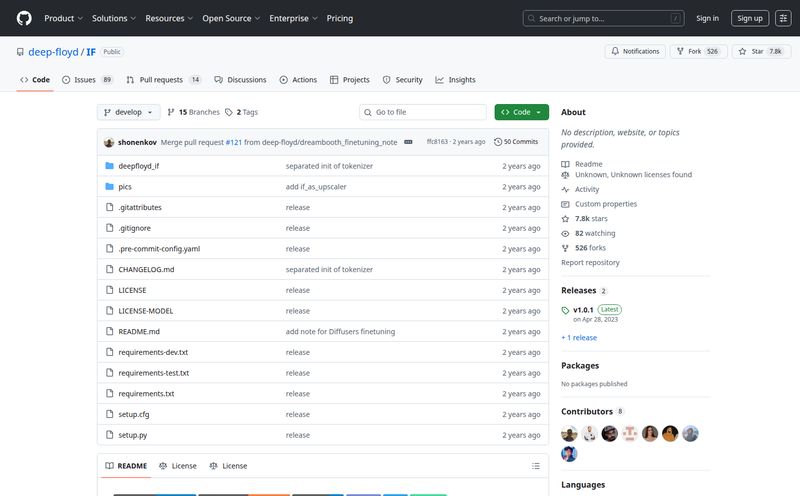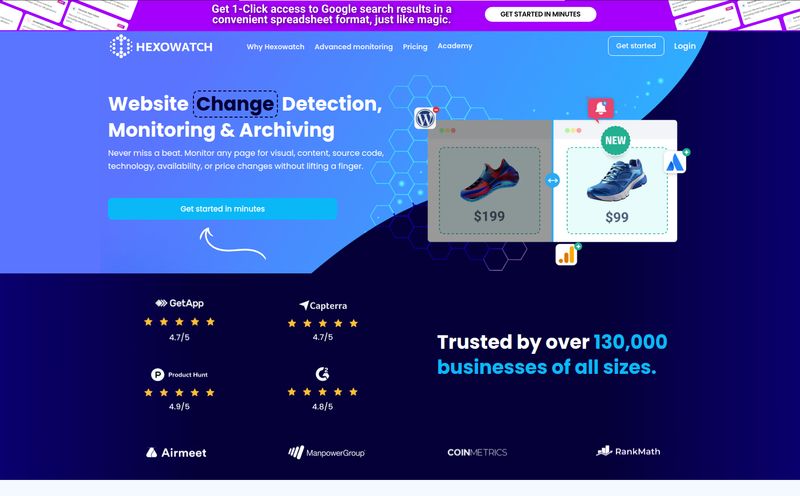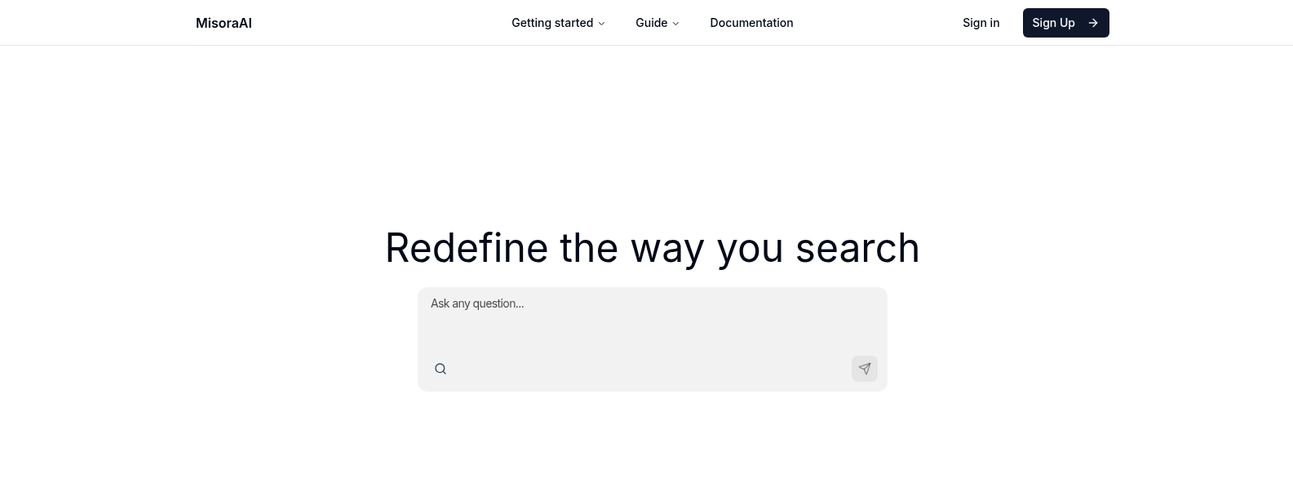Tracking the open-source world can be pure chaos. It’s a constant, roaring firehose of commits, pull requests, and shiny new repositories popping up every single second. Trying to find the real signal in all that noise? It can feel like a full-time job, and frankly, I’ve already got one of those. For years, my process involved a messy combination of GitHub's own Trending page, TweetDecks, and a whole lot of caffeine.
It was… fine. But never great.
Then I stumbled upon OSS Insight. My first reaction was probably the same as yours: 'Great, another dashboard.' I get pitched these things weekly. But then I saw the magic words that always pique my interest: “GPT-powered querying.” Okay, you have my attention. I decided to give it a spin, half expecting it to be another overhyped tool. I was wrong. This thing is different.
What Exactly is OSS Insight? (And Why Should You Care?)
At its core, OSS Insight is a ridiculously powerful analysis tool for everything happening on GitHub. Think of it as a super-smart layer on top of all that raw data. It’s built by the team behind TiDB, a high-performance open-source database, and they use their own tech to crunch billions of GitHub events. That’s not a typo. Billions.
But why should you, an SEO, a developer, or just a tech enthusiast, care? Because in that data lies the future. You can spot the next big framework before it goes viral. You can understand the health of a project you rely on. You can even do some sneaky-smart competitive analysis by seeing which companies are contributing to which open-source projects. It’s about turning raw data into actual, usable intelligence.

Visit OSS Insight
The Standout Features That Caught My Eye
A tool can have all the data in the world, but if you can't access it easily, it's useless. This is where OSS Insight really starts to shine for me. It’s not just a data firehose; it’s a set of really well-thought-out tools for taming it.
The Data Explorer: Talking to Data in Plain English
This is the headliner. The main event. The GPT-powered Data Explorer lets you ask questions about GitHub data in natural language. For example, instead of writing a complex SQL query, I can literally just ask:
“Which JavaScript repositories created in the last year have the most stars?”
And it just… gives you the answer. With a chart. It’s less like a search bar and more like a conversation with a data-obsessed genie. I’ve always felt that the biggest barrier to data analysis isn’t the data itself, but the specialized languages needed to query it. This feature blows that barrier to bits. Now, is it perfect? Not always. But for 90% of the questions I have, it’s astoundingly good.
Trend Spotting Made Easy with Trending Repos
Sure, GitHub has its own trending page, but I’ve always found it a bit simplistic. It’s heavily weighted towards star velocity. OSS Insight’s Trending Repos section feels more sophisticated. It uses a “base score” that considers stars, forks, and other interactions, giving you a more balanced view of what’s genuinely gaining traction versus what just had a good day on Hacker News.
For someone like me, who’s always hunting for the next big topic or technology to cover, this is an absolute goldmine. It helps me see past the immediate hype and identify sustained growth.
Curated “Hot Collections” for Deeper Dives
This is a feature I didn’t know I needed until I saw it. The team behind OSS Insight curates collections of repositories based on specific technical fields. For instance, you can find collections for “AI Agent Projects,” “Web Frameworks,” or “Game Engines.” This is incredibly useful for niche research. Instead of just seeing what's popular overall, you can see what’s making waves within a specific domain. It’s focused discovery, and it saves a ton of time.
The Live Feed: GitHub's Heartbeat in Real-Time
Want to feel the pulse of open source? Check out the Live feed. It's a real-time stream of events happening on GitHub right now. A push here, a comment there, a new issue created. It’s a bit mesmerizing and maybe not directly actionable minute-to-minute, but it gives you an incredible sense of the scale and activity of the platform. It's the digital equivalent of standing in Times Square and just watching the world go by.
My Honest Take: The Good, The Bad, and The Overwhelming
Okay, so I’m clearly impressed. But no tool is perfect. Let's get into the nitty-gritty. In my experience, there are a few things to keep in mind.
First, the sheer volume of data can be a double-edged sword. It's incredible, but it can also be overwhelming for a newcomer. My advice is to start small. Don’t try to boil the ocean. Pick one repository you're interested in or ask one specific question in the Data Explorer. Get a feel for it before you try to map the entire open-source universe.
Second, it’s a GitHub-only party for now. If the project you’re interested in lives on GitLab or some other platform, you’re out of luck. This isn’t really a flaw, just a boundary of what the tool does. But it’s an important one to remember.
Finally, while the natural language queries are fantastic, some might argue that for truly deep, complex analysis, you’ll eventually hit a wall. The tool does show you the SQL it generates, which is a great learning opportunity. Power users with strong SQL skills will still have an edge for those really obscure, multi-layered queries. But for the rest of us? The Data Explorer is more than enough.
What About the Price Tag?
This is the part where I usually get to the bad news. The five-figure enterprise license. The per-seat pricing that makes your eyes water. But with OSS Insight… there isn’t one. As far as I can tell from their site and my usage, the tool is completely free. So what’s the catch?
My guess is that it’s a brilliant marketing move and a technical showcase for TiDB. They get to demonstrate the power of their database on a massive, public dataset, and we get an amazing free tool. That sounds like a win-win to me. And I mean, who doesn't love free?
Who is OSS Insight Really For?
I can see this being invaluable for a few different types of people:
- The Developer Advocate: You can track community engagement, see who is using your software, and identify key contributors with incredible precision.
- The VC or Tech Investor: This is an early-warning system for hot new tech. You can spot promising projects and teams long before they hit the mainstream.
- The Curious Developer: Want to stay on top of your game? You can explore new languages, frameworks, and tools based on real-world adoption data, not just hype.
- The Content Creator (like me!): It's a bottomless well of ideas and data points. I can find trends, back up my articles with real numbers, and discover niche topics that no one else is talking about yet.
Frequently Asked Questions about OSS Insight
What is OSS Insight in a nutshell?
It's a free, web-based tool that analyzes billions of events on GitHub. It uses AI (specifically, a GPT model) to let you query this massive dataset using plain English, helping you discover trends, analyze repositories, and understand the open-source software landscape.
Is OSS Insight really free to use?
Yes, from all available information, it appears to be completely free. It is sponsored and run by the creators of TiDB, likely as a way to showcase the capabilities of their database technology.
Do I need to know SQL to use it?
Not for most things! The main draw is the Data Explorer, which lets you ask questions in natural language. While advanced users can view and write SQL for more complex queries, the average user can get immense value without writing a single line of code.
What kind of data can I analyze with OSS Insight?
You can get deep insights into almost any public activity on GitHub. This includes historical data on stars, forks, pull requests, issues, pushes, comments, reviews, and contributor activity for individual repositories or across the entire platform.
How is this different from GitHub's built-in Trending page?
It's much more powerful. GitHub's page shows recent popularity. OSS Insight provides historical trend analysis, a more nuanced ranking system, and the ability to ask custom, specific questions about the data. The curated collections are also a unique feature.
What is TiDB?
TiDB is the high-performance, open-source, distributed SQL database that powers OSS Insight. It's designed to handle massive amounts of data and complex queries, which is what makes a tool like OSS Insight possible.
Final Thoughts: Is It Worth Your Time?
Absolutely, one hundred percent. In an industry filled with tools that overpromise and underdeliver, OSS Insight is a breath of fresh air. It democratizes data analysis for the open-source community in a way I haven't seen before. The barrier to entry is practically zero.
It’s not just another dashboard; it’s a new way to see and understand the engine room of modern technology development. Whether you're a seasoned data scientist or just a curious tinkerer, it's an incredibly valuable resource. Go play with it. Ask it a silly question about your favorite repo. You might be very surprised by what you find.
Reference and Sources
- OSS Insight Official Website
- TiDB Cloud - The Technology Behind the Tool
- GitHub's Native Trending Page (for comparison)



